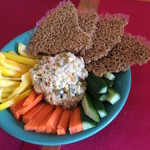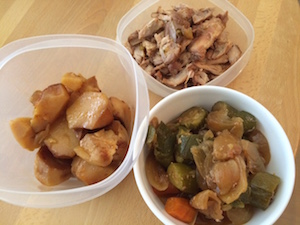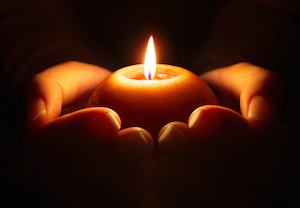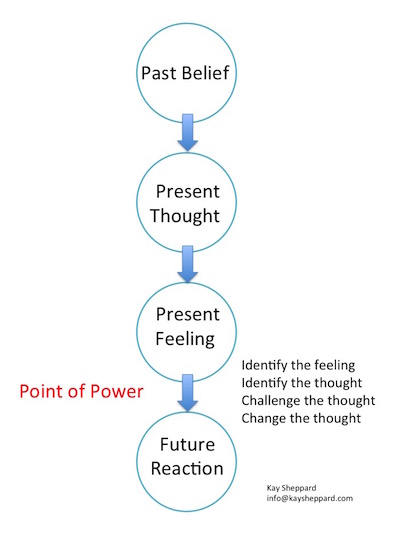 Meet Janice. She was really looking forward to going away on vacation. Her car was packed with fun stuff to do at the beach, her food was ready in a cooler, and she couldn’t wait until she got to her destination to take a break from her busy life. Her intention was to relax, but three days into her vacation she noticed that her stress level was still high. When she looked back at her first three days of vacation, she realized something very interesting: although she was on the beach and she did well food-wise, she stayed fully connected to technology, checking phone messages, sending text messages, searching the Internet, and replying to emails even more than before.
Meet Janice. She was really looking forward to going away on vacation. Her car was packed with fun stuff to do at the beach, her food was ready in a cooler, and she couldn’t wait until she got to her destination to take a break from her busy life. Her intention was to relax, but three days into her vacation she noticed that her stress level was still high. When she looked back at her first three days of vacation, she realized something very interesting: although she was on the beach and she did well food-wise, she stayed fully connected to technology, checking phone messages, sending text messages, searching the Internet, and replying to emails even more than before.
Did I mention that Janice is a food addict? Well, she is. As food addicts, we have a higher risk of developing other addictions. We often hear that people replace alcohol addiction with food addiction, or that their shopping addiction became very active as they recovered from a different addiction.
So what was going on with Janice? Is she addicted to technology? She developed a Technology Addiction as well as FOMO (Fear Of Missing Out).
What is Technology Addiction?
Technology addiction is not yet listed in the latest edition of the Diagnostic and Statistical Manual of Mental Disorders, but David Greenfield, PhD, a psychologist and founder of the Center for Internet and Technology Addiction in Hartford, Conn., says that there are three typical forms of technology addiction:
Internet addiction, sexual content addiction, and social media addiction.
Although there aren’t yet formal characteristics for the disorder, Greenfield says that a diagnosis is possible if you have one or more of these symptoms: loss of time due to technology, withdrawal from people, negative consequences at work or in your relationships, and a higher tolerance for technology — like one game is no longer enough.
Any of the addiction types listed above can affect your health. Too much time on the Internet or playing long hours of online games overload the brain with dopamine. Over time, the dopamine receptors in the brain decrease their activity and the dopamine stops creating pleasurable effects. Just like with food, we feel “high” for a short term, followed by a much longer “low” period.
What is FOMO?
The Merriam-Webster dictionary defines FOMO (acronym for Fear Of Missing Out) as “Not wanting to miss an opportunity, often characterized by attending many social events in a one-time period, not leaving a party until the end, not wanting to decline any invitation or social opportunity due to potential fun or potential important event taking place at said opportunity”.
My impression is that in today’s world, where we are all instantly aware of things happening around us because of how advanced technology has become, more people in more situations experience FOMO. In other words, with so much connectivity through Instagram, Facebook, Twitter and the like, we are instantly aware of the stuff we are missing out on. I recently moved to NY where people walk everywhere, and whether you are on the train, in the street, or walking in the park, everybody around you is busy watching, listening to, or using their phones. In fact, according to Kleiner Perkins Caufield & Byers’s annual Internet Trends Report, people check their phones 150 times a day. What is this doing to us?
The Benefits of Technology
Just like food, technology can add real value to our lives, if used appropriately. Things are more convenient and accessible with the miracles of technology. I recently had a conversation with Kay about the important role technology has in helping food addicts recover. You can sit in the comfort of your own home and join one of our programs by phone or listen to recordings and access materials 24/7. The Kay Sheppard’s Conversation CD’s take advantage of technology and allow people to be in a conversation with Kay at any time. It is all a question of balance and the amount we use technology. I often find myself including technology in my Gratitude List because it allows me to stay connected with family members who are far away and be in service to more people.
Do you suffer from FOMO and are you Addicted to Technology?
Read the following questions and answer them yes or no:
- Are you constantly checking your phone?
- Are you constantly checking your emails?
- Are you often checking Facebook?
- Are you often searching other people’s walls on Facebook?
- Are you talking on your phone or texting when using the restroom?
- Is your phone present on your table during meals?
- Do you take your phone to bed with you?
- Do you frequently send message and pictures to other people?
- Do you find yourself “plugged in” to screens most of the day, every day?
- Do you have notifications and alerts set on your phone and computer?
- Do you often check social media while being focused on work because you get distracted?
- Do you ever have a day where you disconnect from technology for hours?
- Do you often find yourself distracted by playing games or searching the Internet?
If you answered “yes” to most of these questions, chances are that you suffer from technology addiction and FOMO. If you have a history of addiction (any addiction) in your family, it makes those chances even greater.
Recovery starts with awareness. Get honest with yourself, answer these questions, and evaluate your situation.
The minute you realize that you suffer from technology addiction and FOMO you are starting your road to recovery.
 Most of the time our anger, irritation, frustration, is just a tempest in a teapot. We make up a story to stoke our anger because we are angry, we need to be angry, and we want to be angry, so we produce anger. It has nothing to do with the other person at all. It is all about being an angry person.
Most of the time our anger, irritation, frustration, is just a tempest in a teapot. We make up a story to stoke our anger because we are angry, we need to be angry, and we want to be angry, so we produce anger. It has nothing to do with the other person at all. It is all about being an angry person.

 When it’s ready, place the chicken in one container, the potatoes in another, and the vegetables in another separate container.
When it’s ready, place the chicken in one container, the potatoes in another, and the vegetables in another separate container. “An honest regret for harms done, a genuine gratitude for blessings received, and a willingness to try for better things tomorrow will be the permanent assets we shall seek.”
“An honest regret for harms done, a genuine gratitude for blessings received, and a willingness to try for better things tomorrow will be the permanent assets we shall seek.” We read these amazing words “… and acceptance is the answer to all my problems today”
We read these amazing words “… and acceptance is the answer to all my problems today”


